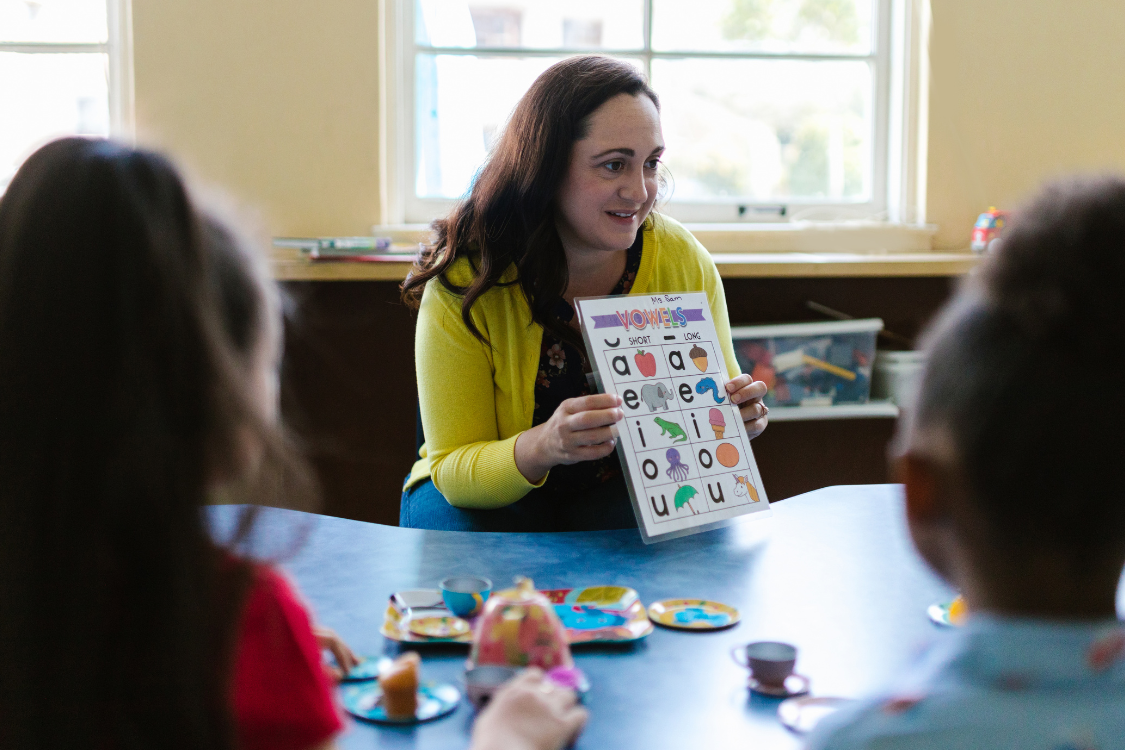Christmas Books For Reading Practice
Your child snuggles beside you on a cold December evening, eyes bright with anticipation as you open a holiday book. The pages smell like fresh print and possibility. Outside, snowflakes drift past the window. Inside, something magical happens. Your little one starts sounding out words, connecting letters to sounds, building the foundation for a lifetime of reading.
Holiday books offer more than festive cheer. They create perfect opportunities for phonics practice wrapped in the excitement of the season.
Reading During Holidays Supports Learning
Children encounter rich language during holiday celebrations. Family gatherings buzz with conversation. Stories get passed down through generations. Books become part of cherished traditions.
When families read together during special occasions like holidays, they create positive associations with reading itself. The emotional connection, warmth, togetherness, and joy make learning stick.
Repeated exposure to predictable text patterns helps emergent readers build decoding skills. Holiday books often use repetitive phrases, rhyming patterns, and simple vocabulary. These features support the explicit, systematic phonics instruction your child needs. The seasonal context also helps children connect new words to familiar experiences, strengthening their understanding and retention.
Why Holiday Books Work for Phonics Practice
Holiday books naturally motivate reading practice. Children want to hear these stories again and again. This repetition, the cornerstone of effective phonics instruction, happens organically.
Many holiday books use rhythmic, rhyming text. Rhyme helps children develop phonemic awareness, the ability to hear and manipulate sounds in words. When your child hears “Bear stays up for Christmas night” and anticipates the rhyme, they’re building crucial pre-reading skills.
The best holiday books for phonics practice share key features. They use decodable text that matches your child’s current skill level. They incorporate repetitive patterns that reinforce letter-sound relationships. They connect familiar sounds to printed words. They engage multiple senses through interactive elements such as sound buttons and textured pages.
Choose Books That Match Your Child’s Reading Stage
Not all holiday books serve the same purpose. Some work beautifully for building vocabulary with pre-readers. Others help emerging readers practice specific phonics patterns.
For children just learning letter recognition, alphabet-themed holiday books connect each letter to festive vocabulary. Your child sees A for Angel, B for Bells, building associations between letters and sounds within a meaningful context.
Board books with simple, repetitive text support the earliest readers. Playful animal sounds and holiday songs teach rhythm and rhyme. The predictable patterns help children feel successful as they “read” along with you.
Interactive books with sound buttons serve multiple learning styles. Classic holiday texts paired with audio cues help children hear the words as they see them on the page. This multisensory approach strengthens the connection between spoken and written language, exactly what phonics instruction aims to achieve.
For children ready to decode simple words independently, printable decodable readers offer targeted practice. These resources use controlled vocabulary. Each book focuses on specific phonics patterns your child has learned. The holiday theme keeps motivation high while your child practices essential decoding skills.
Holiday Books That Support Phonics Development
Here are some of our favorites.
Bear Stays Up for Christmas
This cozy story follows Bear and his forest friends as they try to keep him awake for Christmas. They pick a tree, bake cakes, hang stockings, and sing songs. The simple, repetitive language works perfectly for read-alouds with little ones. Children learn that giving and friendship matter most. The predictable text helps emergent readers follow along and anticipate what comes next.
The ABCs of Christmas
An alphabet book that ties each letter to a Christmas-themed word or object. A for Angel, B for Bells, C for Candy Canes. This helps preschoolers connect letters and sounds with holiday vocabulary. Perfect for emergent readers practicing phonics and letter recognition in a festive context.
Moo, Baa, Fa La La La La!
A playful, musical board book with a holiday twist on the beloved classic. Farm animals sing carols and celebrate the holidays. Lots of rhythm and repetition make this book excellent for preschool children learning simple words, sounds, and rhymes. The silly animal noises engage children while building phonemic awareness.
You’re My Little Christmas Cookie
A sweet board book with rhyming text, cut-outs, and raised elements to engage little kids. Holiday images like cookies, reindeer, and snowmen pair with simple rhyme and rhythm. Good for early vocabulary, listening, and phonemic awareness. The tactile elements keep young children engaged while they explore letter sounds.
The Night Before Christmas 10-Button Sound Book
A board-book version of the classic poem, enhanced with interactive sound buttons. As you read the holiday poem aloud, children press buttons that produce festive sounds. This multisensory approach supports early literacy by pairing text with audio cues. Ideal for preschool listeners and emerging readers.
The Berenstain Bears’ Merry Christmas
Follow the beloved Bear family as they prepare for and celebrate Christmas. Familiar characters and gentle, predictable language make this excellent for preschoolers learning basic vocabulary. The story celebrates holiday family traditions while building reading confidence.
Little Blue Truck’s Christmas
A festive holiday story featuring the friendly Little Blue Truck and his animal friends during Christmas time. Repetitive phrasing and simple storytelling make it well-suited for preschool listeners or early readers. Nice for building vocabulary around holiday and winter themes.
Dr. Seuss’s The Sounds of Grinchmas
An interactive holiday book with sounds and classic Seussian rhythm. Silly noises, fun characters, and rhythmic text support phonemic awareness. The read-aloud becomes more engaging with the addition of auditory cues. Good for preschool-aged kids who enjoy repetition and sound play.
5 Christmas Mini Books! Printable Winter Decodable Readers
A set of five printable mini-books designed as decodable readers. The text uses simple, decodable words that help kids practice phonics and early reading skills. Perfect for preschool or kindergarten, especially for small-group reading, practice centers, or take-home reading during the holidays. Each book focuses on specific phonics patterns children have learned.
Make Holiday Reading Work for Your Family
Start by selecting books that match your child’s current abilities. Don’t worry about grade levels. Focus on what your child can successfully decode with some support. Success builds confidence. Confidence builds readers.
Read the same books multiple times. Repetition isn’t boring for young children. It’s how they learn. Each reading reveals new details, reinforces patterns, and builds fluency.
Point to words as you read. Help your child connect the spoken sounds to printed letters. When you encounter words your child can decode, pause and let them try. Celebrate their efforts, not just correct answers.
Use holiday books during natural moments throughout your day. Read before bed. Share stories during breakfast. Keep board books accessible for independent exploration. The more your child interacts with text, the more comfortable they become with reading.
Create traditions around specific books. When children know certain stories appear each year, they look forward to them. This anticipation makes reading feel special, not like work.
Build Holiday Reading Traditions That Last
The holiday season offers unique opportunities to establish reading routines. Create a special reading nook with festive blankets and pillows. Designate one night each week for extra story time. Let your child choose which holiday book to read before bed.
Consider starting an Advent calendar with daily reading challenges. Each day could introduce a new book or revisit a favorite. This ritual builds anticipation while ensuring consistent reading practice throughout the season.
Make books part of your family traditions. Read the same story on Christmas Eve each year. Share books that reflect your family’s cultural celebrations. Pass down favorite titles from your own childhood. These traditions create emotional connections that make reading meaningful.
Involve extended family in your child’s reading practice. Send decodable readers home with grandparents for special reading sessions. Ask relatives to record themselves reading their favorite holiday stories for your child to listen to repeatedly. These shared experiences reinforce that reading matters to everyone who loves your child.
Find the Right Resources for Your Family
Select books that align with evidence-based literacy instruction. Look for titles with controlled vocabulary, predictable patterns, and decodable text for independent reading practice. Save more complex books for read-aloud time.
Balance entertainment with instruction. Some books should simply spark joy and love of reading. Others should provide targeted phonics practice. Your child needs both types throughout the holiday season.
Watch for books that support specific skills your child is learning. If they’re working on short vowel sounds, find holiday books featuring CVC words. If they’re mastering consonant blends, choose stories with words like “snow,” “tree,” and “sled.”
Don’t overlook the value of rereading familiar favorites. Children build fluency through repeated readings of the same text. The tenth reading of a beloved holiday story serves your child’s literacy development just as much as the first.
Celebrate Reading This Holiday Season
Holiday books create joyful opportunities for phonics practice. They combine the excitement of the season with essential literacy skills. When you share these stories with your child, you’re building more than reading ability. You’re creating memories and traditions that last.
Looking for more ways to support your emergent reader? Visit Phonics.org for evidence-based strategies, expert program reviews, and practical tips that help every child become a confident reader.










